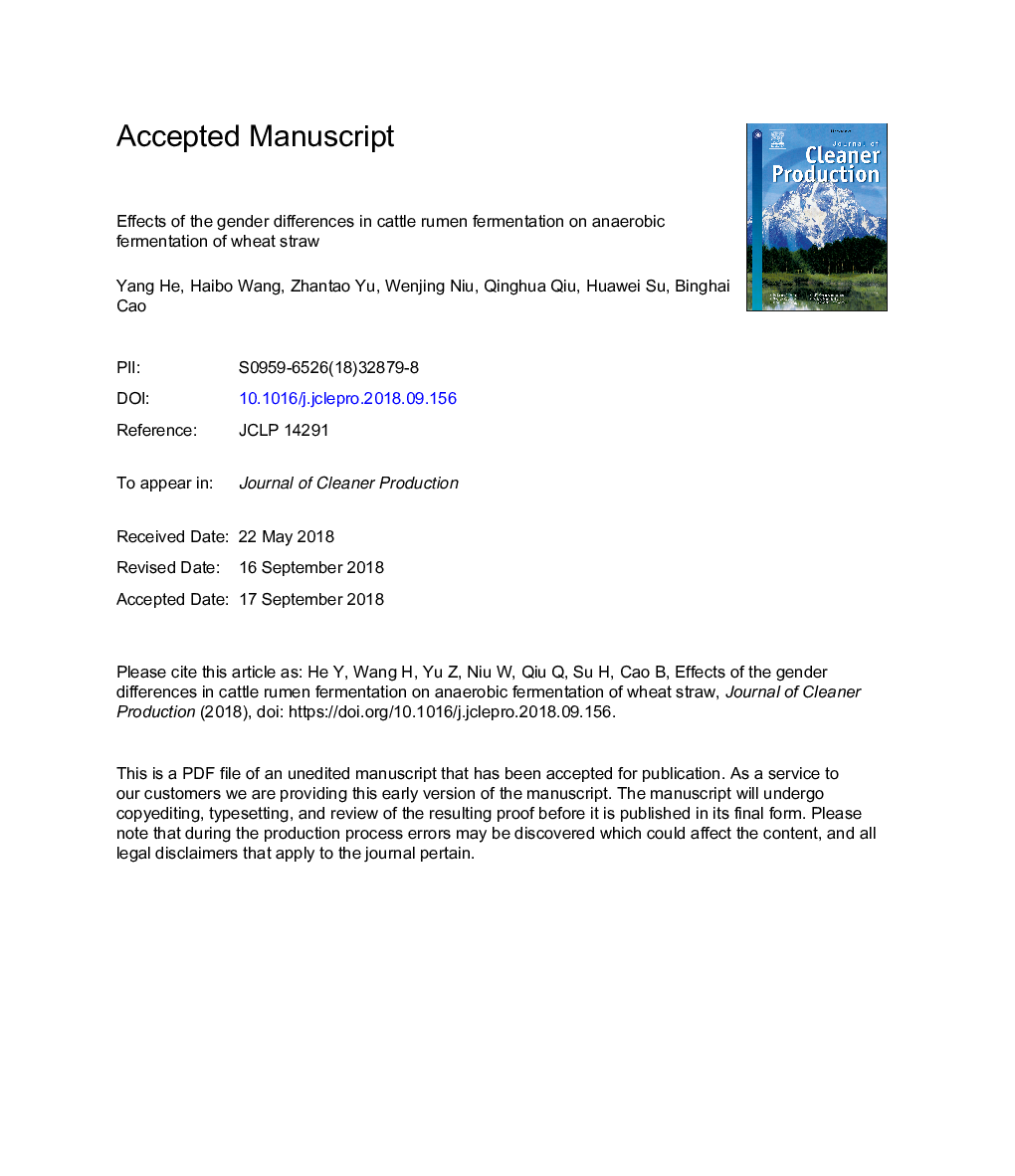| کد مقاله | کد نشریه | سال انتشار | مقاله انگلیسی | نسخه تمام متن |
|---|---|---|---|---|
| 10156338 | 1666386 | 2018 | 35 صفحه PDF | دانلود رایگان |
عنوان انگلیسی مقاله ISI
Effects of the gender differences in cattle rumen fermentation on anaerobic fermentation of wheat straw
ترجمه فارسی عنوان
تأثیر تفاوت های جنسیتی در تخمیر گاو شکمبه بر تخمیر بی هوازی کاه گندم
دانلود مقاله + سفارش ترجمه
دانلود مقاله ISI انگلیسی
رایگان برای ایرانیان
کلمات کلیدی
مایع رامن، بیوماتین، اسیدهای چرب فرار، تخمیر بی هوازی، کاه گندم،
موضوعات مرتبط
مهندسی و علوم پایه
مهندسی انرژی
انرژی های تجدید پذیر، توسعه پایدار و محیط زیست
چکیده انگلیسی
The rumen anaerobic fermentation has been exploited as a molecular platform for producing fermentative biogas and organic acids. The aim of this study was to select more efficient rumen fermentation bacteria by comparing the nutrient degradation rate, rumen fermentation characteristics and bacterial flora between the bulls and heifers. The rumen fluid from bulls and heifers was inoculated to wheat straw for anaerobic fermentation to produce organic acids and biogas. The results showed that the bulls had higher degradation rate of dietary total solids and acid detergent fiber, and had higher concentration of acetate, butyrate, ammoniacal nitrogen, total volatile fatty acids and total fungi in rumen compared with the heifers (Pâ¯<â¯0.05). The rumen bacterial flora of bulls had lower the shannon index, and higher bacterial abundance of Bacteroidia class and Prevotellaceae family than that in the rumen of heifers (Pâ¯<â¯0.05). These bacterial floras were significantly clustered according to gender (Pâ¯<â¯0.05). There were significant correlations between the abundance of rumen bacteria families and the rumen fermentation products. In the anaerobic fermentation of wheat straw, the wheat straw inoculated with bull rumen fluid produced 183.4â¯mmol of acetate, 22.19â¯mmol of propionate, 221.6â¯mL/g volatile solid (VS) of biomethane and 44.6â¯mL/g VS of biohydrogen, which were 16.8%, 39.3%, 32.5% and 46.8% higher than those inoculated with heifer. The methane potential yield model shown that bull microbes produced 288â¯mL/g VS maximum methane yield, increased by 35.2% compared to heifers. These results suggested that the differences in the rumen bacterial flora between different genders of the cattle resulted in the rumen bacteria from bulls were more conducive to the production of biofuels and bioproducts by anaerobic fermentation.
ناشر
Database: Elsevier - ScienceDirect (ساینس دایرکت)
Journal: Journal of Cleaner Production - Volume 205, 20 December 2018, Pages 845-853
Journal: Journal of Cleaner Production - Volume 205, 20 December 2018, Pages 845-853
نویسندگان
Yang He, Haibo Wang, Zhantao Yu, Wenjing Niu, Qinghua Qiu, Huawei Su, Binghai Cao,
